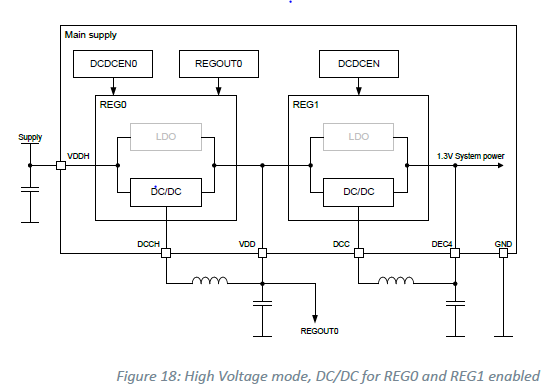Hi to all,
this is my first public ticket ;)
I would power a nRF52840 on my custom board both with a cell battery (specifically CR2032) and the VBUS provided by the USB connection.
I was thinking to use two schottky diode in the way showed in the attached image with using the internal DCDC of the nRF52840 as in the development board.

But I'm not sure to use schottky diode since the voltage drop on the diode. In the proposed configuration for the nRF52840, I cannot find any solution that could fit with this question.
Has anyone done this task before?
Thanks in advance





